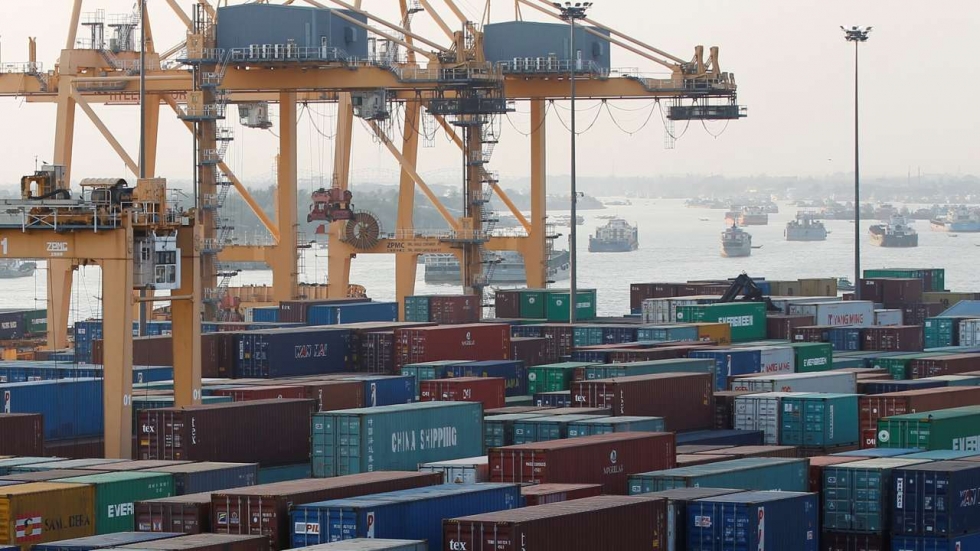The banking sector is expected to make strides forward this year as fiercer competition forces banks in Myanmar to level up.
“This year, the banking environment will be much better than before. There are still many hurdles left to cross to liberalise and strengthen this sector so that it can support the economy. Nevertheless, we have seen good progress over the last two years of reform,” said U Soe Thein, vice chair of the Central Bank of Myanmar (CBM).
Following a CBM decision to level the playing field between local and foreign banks, competition for market share in the sector is expected to intensify, which is a positive development for Myanmar.
Under Notification 6/2018, issued on November 8, 2018, foreign banks are now able to lend to domestic firms in the local currency at the standard lending rate of 13 percent. However, foreign banks are free to set their own interest rates if the loans are in foreign currencies. They will also be permitted to provide the full suite of trade financing services, the CBM said.
This year, foreign banks will be free to expand across the country. There are 13 international banks from China, Japan, Singapore, India, Malaysia and Vietnam with branches in the country currently listed with the CBM, while 49 other banks have representative offices here.
The move is expected to spur local banks to becoming more competitive and eventually help support growth in the Myanmar economy as more firms gain access to funds.
It also arrives at a time when the insurance industry is opening up to foreign providers.
“For banking to develop, the insurance businesses also need to thrive. With the growth of the insurance businesses, other investors will enter the country,” said U Kyaw Ni Khin, chief business officer of Myanmar Apex Bank (MAB).
“These new conditions will enable growth and development in the banking and financial sector this year and beyond, allowing it to become more competitive and develop into a key pillar of support for the economy,” said U Kyaw Ni Khin.
Already, MAB has launched a special wealth banking and rewards programme – MAB Gold Wealth Banking – aimed at high nett worth individuals with the ability to place a minimum fixed deposit of K300 million in anticipation of tighter competition.
With foreign banks now on the scene, the next anticipated move by the CBM is interest rate liberalisation. Currently, the bank lending rate is set at 13pc, with loans approved strictly on the availability of property or land as collateral.
This year, the CBM is expected to issue new directives permitting banks to be more flexible and competitive with their lending terms.
“Currently, the banks are giving out loans to those who have collateral. We are planning allow banks to provide loans without collateral but with higher interest rates to further liberalise the sector and enable it to be more competitive and supportive of the economy,” said U Soe Thein.
Interest rate liberalisation represents an opportunity for the banks to provide more financial support to businesses and will also drive further growth and development in the banking sector, said U Hpay Myint, senior adviser at CB Bank.
“By allowing them to be more flexible in setting interest rates, local banks will be able to take on more or less risk as they deem fit. This is the right step forward for Myanmar,” he said.
Local banks are also preparing to provide financial support based on credit scores issued by Myanmar Credit Bureau Ltd.
“The credit bureau will start operating this year and if it is successfully established, the loan sector will develop quickly,” said the bureau’s chair, U Zaw Lin Aung.
Nevertheless, the sector will continue to come under stricter regulations as the CBM continues its reforms.
Among the directives released by the CBM is notification 7/2017 last November under which all local banks must convert overdraft facilities into term loans. By July 2020, the volume of overdrafts as a percentage of a bank’s loan book should be reduced to 20pc. Meanwhile, each bank’s policy on term loan management must be submitted to the CBM.
Additional disclosures, such as whether the loans are being provided to related parties or not, have also been introduced. The banks are now required to submit a list of loans of more than K5 billion or 10pc of their capital, while details of borrowers who fail to repay on time must also be submitted to the CBM.
Meanwhile, banks that operate braches without permission will be fined between K7 million and K20 million, according to a CBM directive.
So far, local banks have been complying with the stricter regulations and the sector is improving, U Soe Thein said. “The banks have been following the rules on minimum capital requirements and strengthening their loan books. This is a positive situation and the banking and financial sectors will be stronger this year,” said U Soe Thein.
Scion Industrial Engineering providing all king of industrial engineering spare parts in Myanmar.
Source:https://www.mmtimes.com/news/banking-sector-strengthen-support-economy-2019-experts.html


